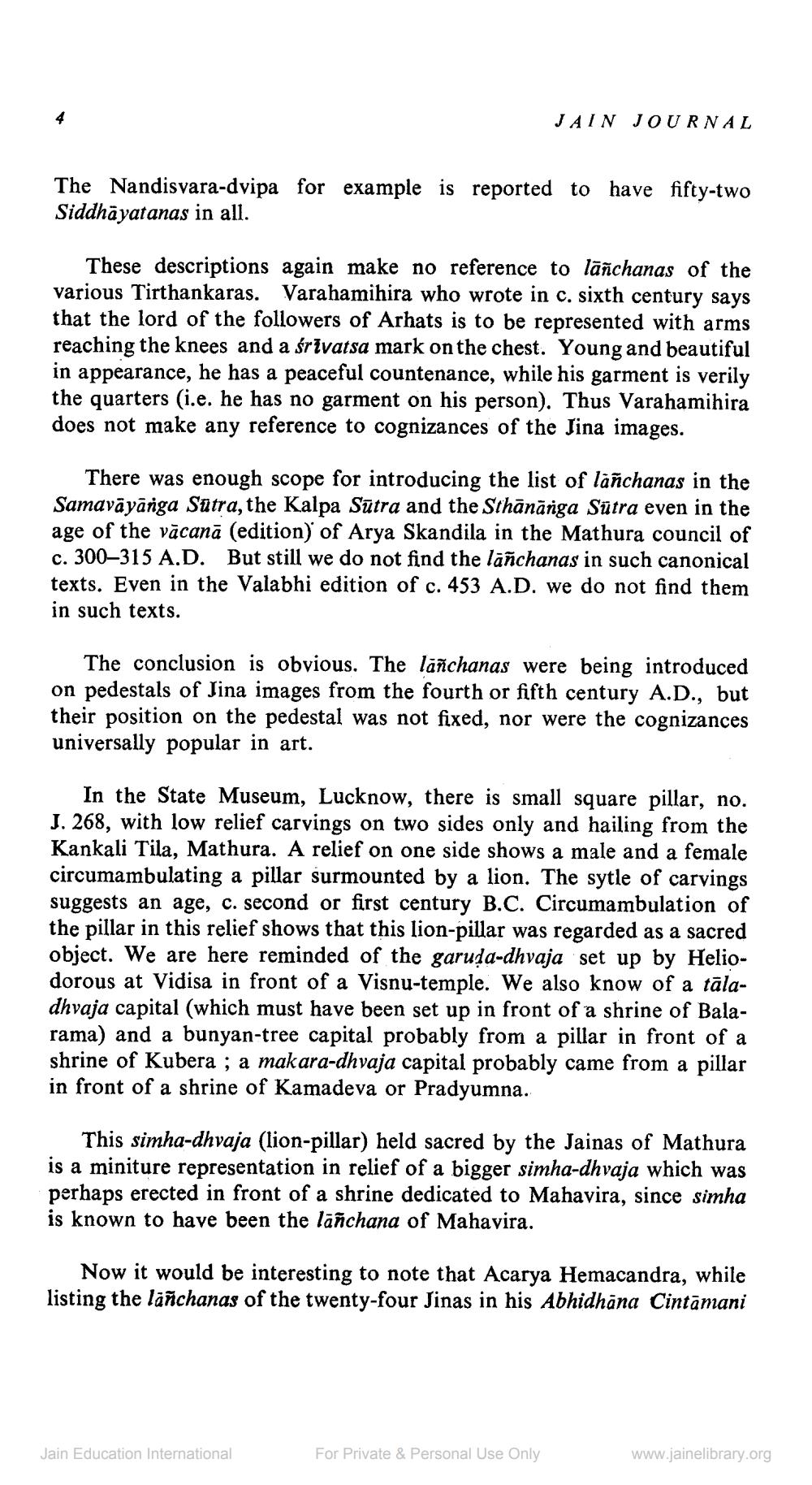________________
The Nandisvara-dvipa for example is reported to have fifty-two Siddhāyatanas in all.
JAIN JOURNAL
These descriptions again make no reference to lanchanas of the various Tirthankaras. Varahamihira who wrote in c. sixth century says that the lord of the followers of Arhats is to be represented with arms reaching the knees and a śrivatsa mark on the chest. Young and beautiful in appearance, he has a peaceful countenance, while his garment is verily the quarters (i.e. he has no garment on his person). Thus Varahamihira does not make any reference to cognizances of the Jina images.
There was enough scope for introducing the list of lanchanas in the Samavāyānga Sutra, the Kalpa Sutra and the Sthānānga Sutra even in the age of the vacanā (edition) of Arya Skandila in the Mathura council of c. 300-315 A.D. But still we do not find the lañchanas in such canonical texts. Even in the Valabhi edition of c. 453 A.D. we do not find them in such texts.
The conclusion is obvious. The lañchanas were being introduced on pedestals of Jina images from the fourth or fifth century A.D., but their position on the pedestal was not fixed, nor were the cognizances universally popular in art.
In the State Museum, Lucknow, there is small square pillar, no. J. 268, with low relief carvings on two sides only and hailing from the Kankali Tila, Mathura. A relief on one side shows a male and a female circumambulating a pillar surmounted by a lion. The sytle of carvings suggests an age, c. second or first century B.C. Circumambulation of the pillar in this relief shows that this lion-pillar was regarded as a sacred object. We are here reminded of the garuda-dhvaja set up by Heliodorous at Vidisa in front of a Visnu-temple. We also know of a taladhvaja capital (which must have been set up in front of a shrine of Balarama) and a bunyan-tree capital probably from a pillar in front of a shrine of Kubera; a makara-dhvaja capital probably came from a pillar in front of a shrine of Kamadeva or Pradyumna.
This simha-dhvaja (lion-pillar) held sacred by the Jainas of Mathura is a miniture representation in relief of a bigger simha-dhvaja which was perhaps erected in front of a shrine dedicated to Mahavira, since simha is known to have been the lañchana of Mahavira.
Now it would be interesting to note that Acarya Hemacandra, while listing the lanchanas of the twenty-four Jinas in his Abhidhana Cintamani
Jain Education International
For Private & Personal Use Only
www.jainelibrary.org




